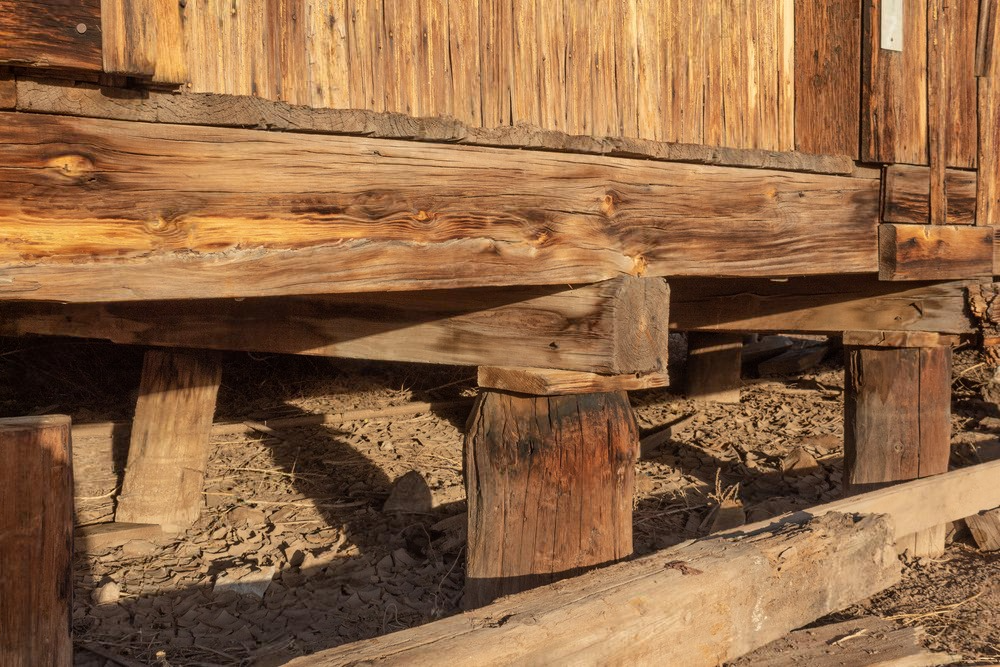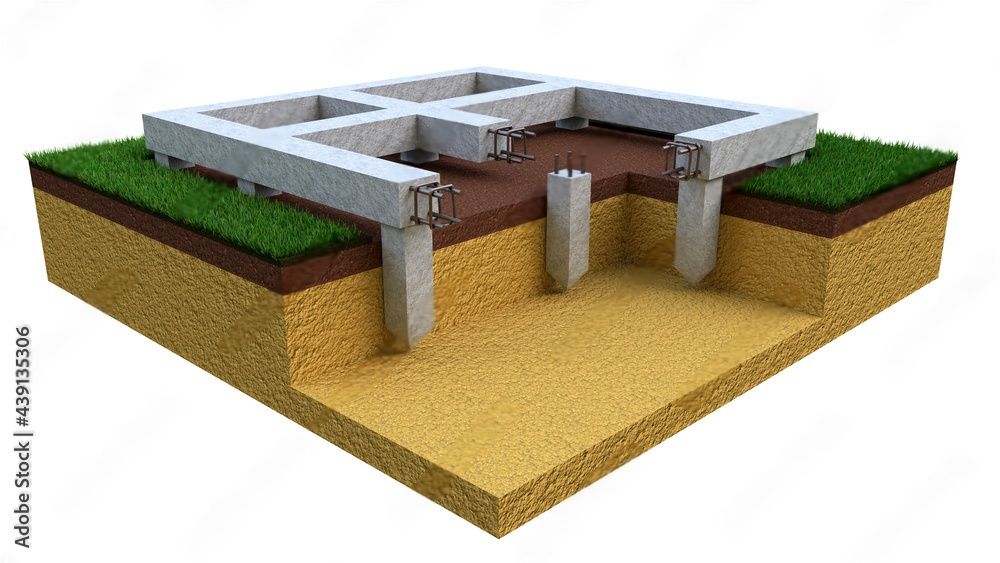

Do you notice parts of your foundation are sagging, cracks appear in the flooring, or are you experiencing flooding issues within your house? Pier and beam foundations can provide an economical way of building but are susceptible to erosion and water damage. This straightforward guide can assist in estimating both costs and efforts needed to keep your home secure and standing strong.

In the United States, homeowners typically construct slab and pier-and-beam foundations; crawl space homes could even feature both types. Pier and beam foundations (sometimes referred to as posts and beams) are structures built from wooden beams affixed to concrete pilings that raise your home above ground level, with wooden cross-beams known as joists placed horizontally across main support beams for additional support.
This technique provides additional structural integrity. A raised foundation offers several advantages over slabs. Notably, it elevates a home above any potential flooding or moisture damage risks and allows easier access to electrical, plumbing, and sewage lines in the crawl space beneath a home.
Pier and beam foundations may be susceptible to various issues that can damage them, with the particular vulnerability being exposed by elevated platforms like pier and beam that act like elevated platforms themselves - an idea designed to raise homes off of the ground but often leading to cracks, uneven flooring or worse, sinking parts of your house due to any damages sustained on a said elevated platform.
can lead to poor soil conditions due to water pooling under your house or water expanding the soil.
can cause your foundation to settle (sink into the ground), or "heave", (push upwards, out of the earth).
could also be at fault, as the past century's understanding of soils and building practices has changed dramatically.
If you live in an area prone to seismic activity, you may discover your older home needs to be retrofitted properly for seismic activity.
Different repair methods exist depending on the extent of damage done to your pier-and-beam foundation, depending on its damage. While repairs can be expensive depending on what work needs doing, working at home may prove challenging and require additional expenses due to tight spaces requiring extensive labor costs.
Reshimming is one of the easiest, quickest, and most efficient forms of repair, only requiring small beam adjustments. Shims made out of wood can then be used to move beams and joists around and tightened back down again to fill any gaps - typically costing anywhere between $1500 to $5500 in repairs costs.
If a pier is degrading over time, or if soil changes are causing your home to be heavier than it was before, you may need to replace or add piers. The cost of this work can range from $2,000 to $4,000
Rot and mold damage to house structures that rest on wooden piers can result in beams dislodging from their supports, leading to costly repairs of replacing a beam or rebuilding its foundation; costs range between $4500 to $10k, depending on the extent of the damage.
Contractors may suggest underpinning as an option when the existing piers in your home are failing, and replacement or additional piers won't resolve this problem. Underpinning is driving deeper piers under the foundation to reach soil that supports it effectively and can support structural loads.
Home underpinning may be necessary for various capacities for your property and will typically range between $12,500 and $32,500 in cost, depending on the extent of support required.
Foundation repairs cost can depend on many variables such as foundation type and materials used, labor required for repair work, and permits required - plus how extensive any damage has occurred.
Size matters when it comes to foundation crack repair costs; larger foundations tend to be heavier, larger, and more complex structures requiring additional materials and equipment for repairs.
Over time, the soil expands, contracts, and shifts. Certain types of soil have greater stability than others, and this impacts how water drains beneath your home - insufficient drainage could result in erosion that damages its foundation and compromises its strength.
Due to soil expansion and contraction, foundation settlement often results. Underpinning can often be necessary in these instances - which can often prove expensive.
If the foundation problem is hard to access, removing and replacing landscaping could make your house more accessible. Crawl space foundation repair tends to be cheaper since crawl spaces provide easier access.
Labor and permits are two of the biggest expenses for foundation leak repair. Permit costs depend on where your municipality resides - visit its website for more details. You should expect to spend approximately $200 an hour on labor costs.
Foundation problems may develop for various reasons. Repair costs depend on each factor involved but here are a few common ones:
Cracks
Shifting
Bowing
Leaks
Sinking
Crumbling
Soil erosion
Post and beam foundations consist of vertical columns or piers supporting horizontal beams, providing support. There are various variations available based on their original designs.
Concrete blocks are stacked one on top of another before being reinforced with steel to form a stable foundation for beams. This design works best in areas that feature level soil that supports load-bearing capabilities - it could even make sense on lots with stable surfaces!
This design resembles its counterpart but instead of hollow cylindrical columns it uses solid cylindrical ones. Contractors create pre-dug holes by drilling shafts in the ground; in these shafts the concrete for the piers will then be poured; these types of piers act as excellent supports for later placed beams.
This type of foundation design is perfect for traditional homes constructed using timber posts or pilings with wood foundation treated against insects, decay, and wood rot - an excellent solution for smaller houses.
Steel piers offer homeowners looking to construct homes a unique alternative to wood or concrete foundations. Contractors use vertical steel columns as foundation support, using hydraulic machinery to drive them into place - an effective choice if your soils contain weak or shifting conditions.
Caisson foundations are ideal for areas with soft soil and wet conditions and are used in building bridges, docks, and other structures near water bodies. This method uses concrete-filled watertight cylinders anchored with holes drilled near them as solid bases to support their foundation.
Void filling essentially entails plugging any holes that have formed under your concrete as a result of soil erosion or when settling has taken place. When water penetrates your concrete slab, soil erosion happens because the slab begins to sink where the void is. Your concrete will sink if the soil beneath your foundation was not correctly compacted in the first place.
Repairing a post and beam foundation may be costly depending on its work requirements and can become even more so if done in tight quarters. Cost estimates range anywhere between $1,000 for minor fixes to $30,000+ in case major structural work needs to be performed.
Minor adjustments and reshimming(from $1,000 - over $7,000).
Addition of piers or repair of piers (from $4,000 to $6,00)
Replace the beam (from $10,000 - $20,000)
Add support jacks (from $5,000 to $15,000)
The substrate of existing Piers (from $30,000 or more)
Please be aware that cost estimates provided here are only estimates; to get an exact figure on your project please get in touch with one of our specialists.
Should you detect foundation cracks or suspect shifting floors or sinking areas within your house, contact Affordable Foundation Repair to quickly identify issues and provide estimates to repair. We are family owned and operated company serving across Florida and Georgia since 25 years. To schedule a free estimate, call 855-749-1322